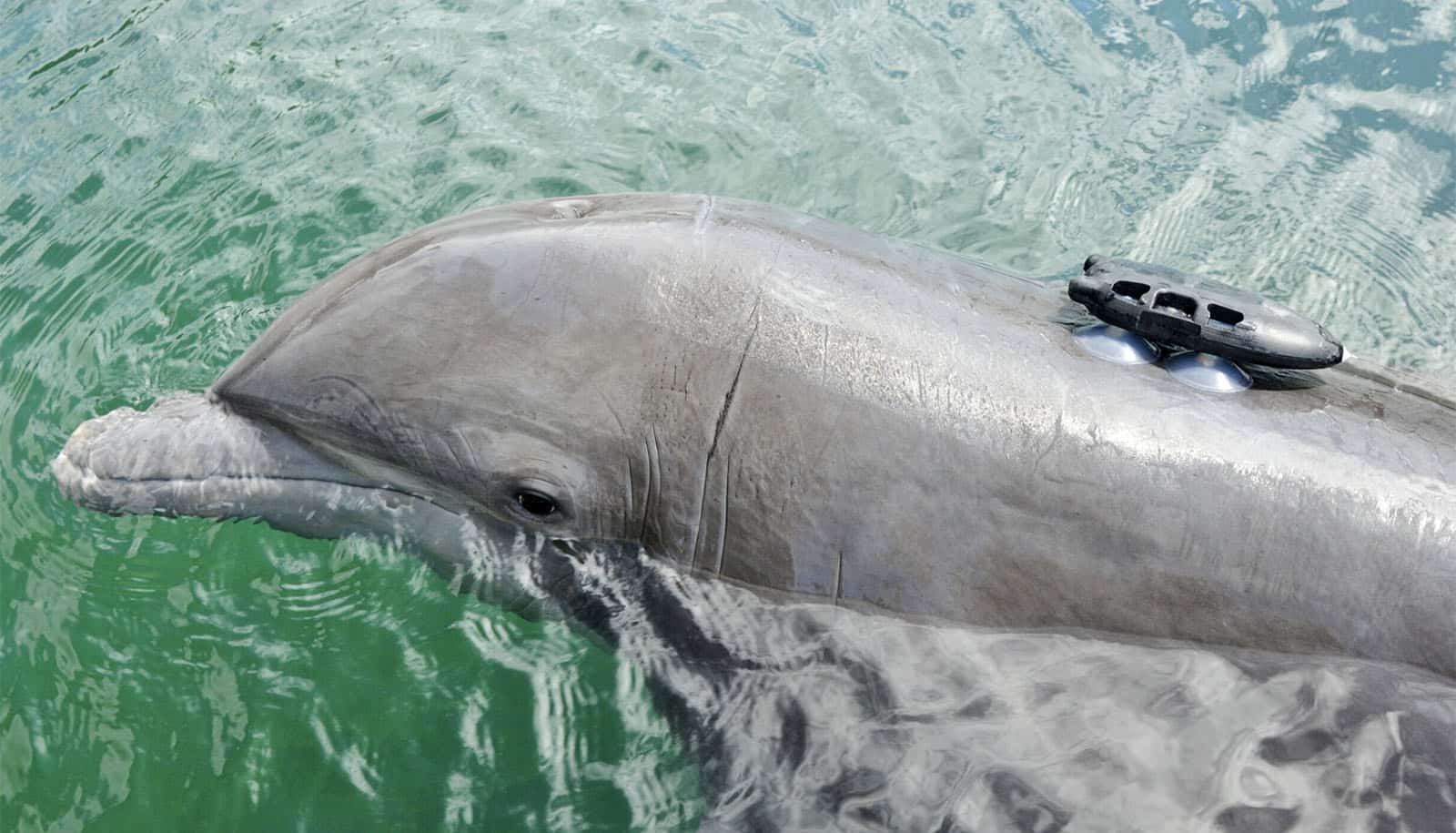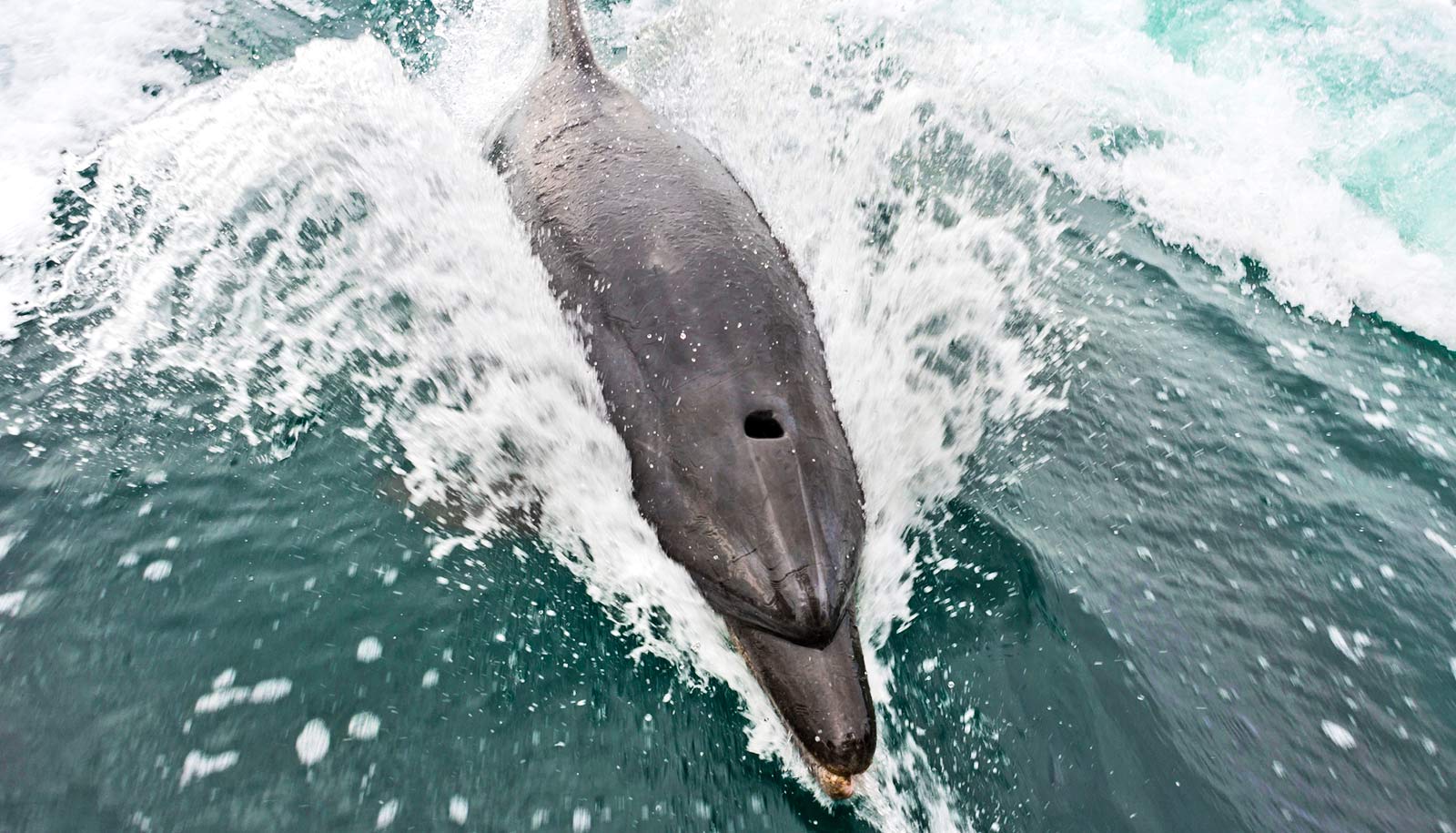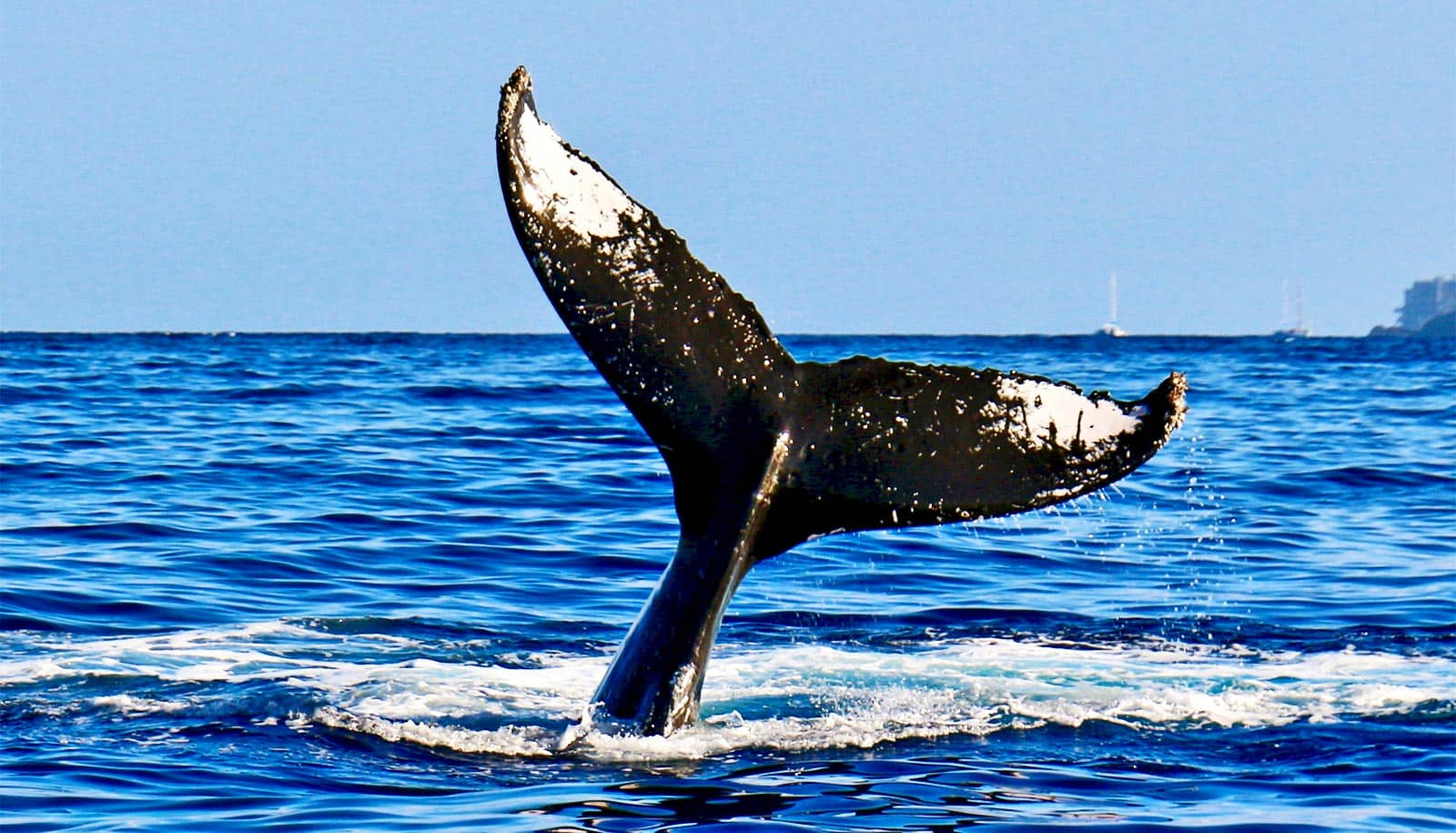New wearable sensors for dolphins could reveal the cost of human disturbances in marine habitats, say researchers.
Human disturbances in dolphin habitat include climate change, overfishing, and noise pollution from construction, oil exploration, and navy sonar activity. These disturbances can interrupt important animal behavior like foraging for fish and socializing, but measuring disturbance is difficult under water.
Devices very similar to fitness trackers used by humans—known as biologging tags—are used in biology research but estimating the energetic cost of swimming has been challenging. With custom biologging tags, the engineers now are able to measure animal movement during thousands of strokes as they swim.
“Our goal is to use tag data to estimate foraging events, how many fish were consumed during a day, and connect that to estimates of how much energy dolphins use during the movement required to catch those fish,” says Alex Shorter, assistant professor of mechanical engineering at the University of Michigan and senior author of a paper in the Journal of Experimental Biology on the work.
“This is important for conservation because we can then use our approach to estimate energetic costs when these animals are disturbed.”
In the new work, the researchers developed estimates of energetic cost from tag data by working with their human and animal collaborators at Dolphin Quest Oahu. In that environment, the researchers could conduct repeatable swimming trials over a range of speeds from multiple animals to generate the data they needed to estimate how much energy the animals used as they swam. Marine mammal specialists trained the dolphins to wear the tracker during lap trials and periods of free swimming.
The tag sits between the blowhole and dorsal fin of the dolphin, attached with suction cups, where it noninvasively measures speed, temperature, pressure, and movement. Six dolphins participated in the work, and just as in data collection with humans, the animals were free to decline to participate in the work at any time.
During the prescribed lap trials, the animals started from rest at a floating dock and swam an 80-meter lap underwater around one of the marine mammal specialists and back to the dock at speeds of up to 21 kilometers per hour (13 miles per hour). During free swimming, in which the dolphins received no instructions, tags tracked movement for periods that ranged from 9.5 to 24 hours. One of the dolphins tracked for a 24-hour period swam over 70 kilometers (43.5 miles), and these data were used for a case study of daily activity and energetic cost for a bottlenose dolphin. Importantly, these findings can extend to tag data from animals in the wild.
“Our tag-based method is universally applicable to both animals in managed and wild settings, and can lead to a host of new research in monitoring the physical well-being of dolphin populations, which in turn will inform how we as humans are affecting their travel patterns, feeding requirements and lives in general,” says Joaquin Gabaldon, a postdoctoral researcher in robotics and first author of the study.
“From a technological perspective, it is our hope that other researchers see the potential of dedicated on-tag speed sensing, and pursue the development of more adaptable speed sensors to enable energetics monitoring for a wider variety of marine animals,” Gabaldon says.
Collaborators at Loggerhead Instruments, the Woods Hole Oceanographic Institution in Massachusetts, and Aarhus University in Denmark contributed to making the sensors.
The study had support from the Office of Naval Research, the National Science Foundation, the Department of Fisheries and Oceans Canada, and the University of Michigan.
Source: Makenzie Schlessman for University of Michigan



